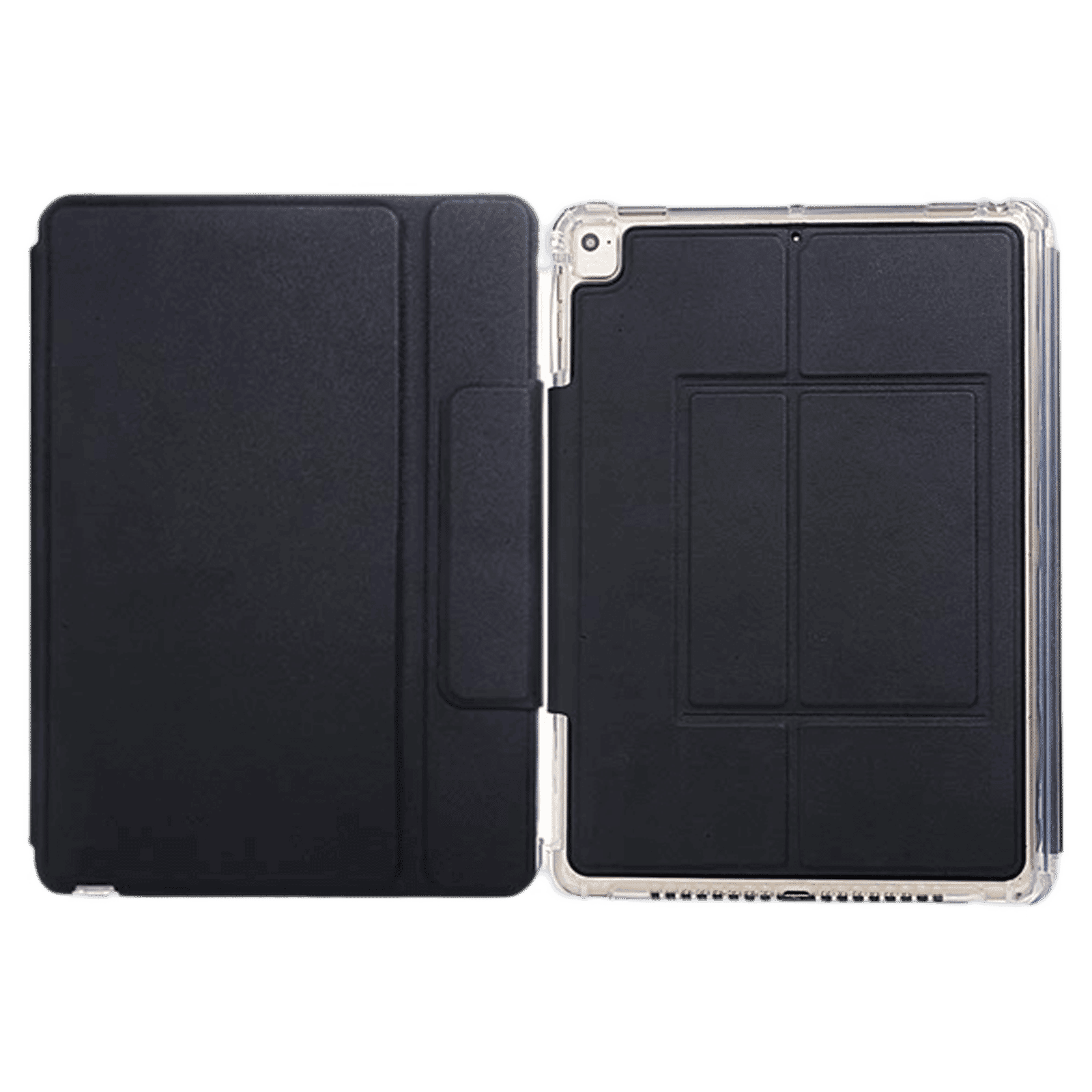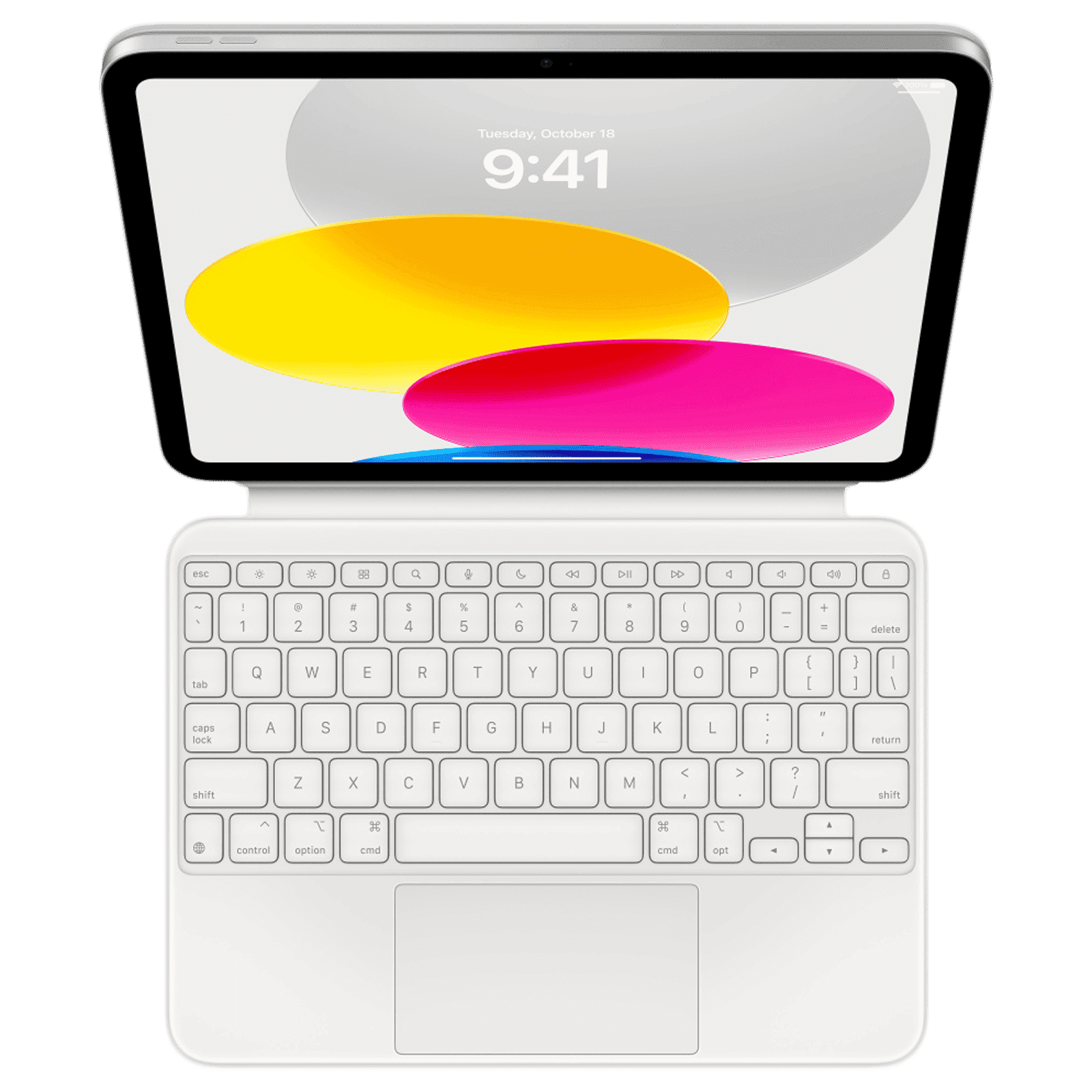%20(Presentation)%20(1600%20x%20600%20px)(32)-ee8a4139-c09f-4a01-8a9e-a2135cfc5637.webp&w=3840&q=75)
Consumer Electronics
•04 min read

Buy neopack 7PAD5 Commuter ABS Plastic Flip Cover for Apple iPad 7th Gen and 8th Gen 10.2 Inch (Detachable Wireless Magnetic Keyboard, Black) online at best prices from Croma. Check product details, reviews & more. Shop now!
The seamless integration of Apple devices has truly redefined the way technology enhances our everyday lives. As an iPhone user, finding a complementary Apple tablet, or iOS tablet, can seem like a daunting task with all the options available. This guide is here to help you understand how to choose the best Apple tablet for your needs. By exploring key factors, integration benefits, and even alternatives, you'll gain the confidence to make an informed choice that boosts your productivity and fits your lifestyle.
An Apple tablet, commonly known as an iPad, is a versatile device powered by iOS. Its intuitive operating system, sleek design, and reliable performance set it apart from other tablets in the market. The iPad's unique features, from high-resolution displays to efficient power use, make it a favourite among users who value both form and function.
For those who already enjoy the benefits of an iPhone, staying within the Apple ecosystem offers unmatched advantages. The compatibility between your iPhone and an iPad extends to features like iCloud, Handoff, and even using your iPad as a secondary display with Sidecar. This integration not only simplifies your digital life but also boosts productivity by enabling you to start a task on one device and effortlessly continue on another.
The market offers various iPad models to cater to different needs. Whether it is the standard iPad, the versatile iPad Air, the high-powered iPad Pro, or the compact iPad Mini, each model brings its own strengths. The choice largely depends on your requirements including screen size, processing power and budget. For example, if you prioritise portability without sacrificing performance, the iPad Mini might be the ideal tablet for iPhone users on the move. On the other hand, professionals may find the iPad Pro, with its robust processing capabilities and expansive display, a perfect partner for creative work.
One of the primary reasons to stick to an Apple tablet when you already own an iPhone is the inherent compatibility between the devices. Features such as FaceTime, iMessage, AirDrop, and even the innovative Sidecar let you use your iPad as an extended interface for your iPhone. Regular software updates from Apple not only enhance features but also ensure that your shared apps, like Notes and Photos, work seamlessly across both devices. This smooth integration enriches your overall experience and solidifies the advantages of staying within the Apple ecosystem devices.

Buy Apple Magic Bluetooth Folio Keyboard for iPad (10th Gen) with Touchpad (Multi Touch Gestures, White) online at best prices from Croma. Check product details, reviews & more. Shop now!
Choosing between portability and performance is a common consideration. Lightweight models such as the iPad Mini excel in portability, making them easy to carry during travel or daily commutes. Conversely, the iPad Pro is built for high performance, catering to users who engage in gaming, professional work, or heavy multimedia tasks. Deciding on which aspect relies on identifying your primary use case. Ask yourself: Do I need a device that easily slips into my bag for quick work on the go, or one that can double as a portable workstation during longer work sessions?
When paired with an iPhone, an iPad transforms your productivity and creativity. Features such as Handoff allow for a fluid transition between devices, meaning you can start an email on your iPhone and finish it on your iPad without missing a beat. The Sidecar feature takes integration a step further by enabling your iPad to work as a secondary display, thus expanding your workspace wherever you are. This level of connectivity is specifically designed to enhance your user experience and simplify multi-tasking.
Another compelling advantage is the array of shared apps and services that work across both devices. Applications like Notes, Photos, and Apple Music are inherently designed to operate seamlessly whether you’re using an iPhone or an iPad. This creates a holistic digital environment where your data and media stay in sync. Furthermore, shared subscriptions such as iCloud storage and bundled services under Apple One make managing your digital life easier, ensuring that all your devices always have access to your latest updates.
Insight Corner: The Power of Apple Ecosystem Devices
Did you know? Pairing your iPhone with an iPad unlocks unique features like Universal Control, allowing you to use a single keyboard and mouse across both devices. This level of integration is unmatched by any other tech ecosystem.
While the seamless integration of Apple tablets offers many benefits, there are scenarios where they might not be the best fit. Some users may face budget constraints or have specific needs that an iPad cannot meet. In these situations, exploring alternatives might help you find a device that aligns more closely with your financial or performance expectations. Remember, it is not just about owning an Apple device, but about selecting a tablet that best fits your lifestyle and requirements.
There are several viable alternatives if you are open to exploring options beyond the Apple ecosystem. Other brands offer tablets that come with impressive features and cater to similar use cases. While these alternatives might not provide the same iPhone and tablet compatibility found in Apple products, they may offer attractive features such as broader budget options or specific functionalities that some users may find appealing. Always weigh the pros and cons while considering how well any alternative integrates with the tech devices you already own.
An Apple tablet is generally referred to as an iPad, which is part of Apple’s acclaimed lineup of iOS tablets.
iPad prices vary by model and specifications. Entry-level models start around Rs.24,000, while high-end variants can be significantly more, depending on the features and performance capabilities.
While iPads do not support traditional cellular calling like iPhones, users can make calls using apps such as FaceTime, Skype, or WhatsApp, provided they are connected to Wi-Fi or have access to cellular data.
The differences between iPads typically lie in their screen size, processing power, and additional features such as camera quality, Apple Pencil support, and overall design efficiency.
The iPad Pro is considered ideal for professional work due to its powerful chipset, large high-resolution display, and compatibility with advanced accessories like the Magic Keyboard and Apple Pencil, making it a robust choice for productivity.
Apple tablets, especially iPads, are thoughtfully designed to enhance the experience of iPhone users, combining seamless integration with outstanding performance. By assessing your needs—whether that means favouring portability, performance, or aligning with a particular budget—you can confidently select the tablet that enhances your digital lifestyle. Even if the Apple ecosystem doesn’t seem to match your exact needs, exploring alternatives can provide new perspectives on what you truly require in a tablet. As you make your decision, remember that the integration between your devices can help you earn NeuCoins rewards on Tata Neu while enjoying the true convenience of connected technology. Enjoy the journey of discovering a device that perfectly complements your tech setup.